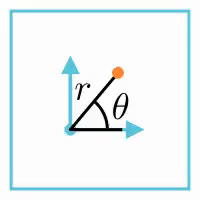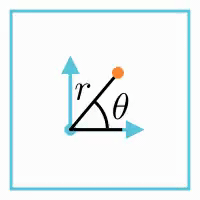Polar Coordinates¶
In polar coordinates, points in a plane are defined by radial distance and angular coordinate (Figure 1). The radial direction measures the point's distance from the origin, while the angular direction corresponds to the counterclockwise angle from the positive x-axis. These two dimensions together specify any point in the plane.
When transitioning from Cartesian coordinates (, ) to polar coordinates (, ), we calculate the radial distance and angle using equation (1). Conversely, when converting from polar back to Cartesian coordinates, we use equation (2).
Loading...
Figure 1:Polar coordinate system

